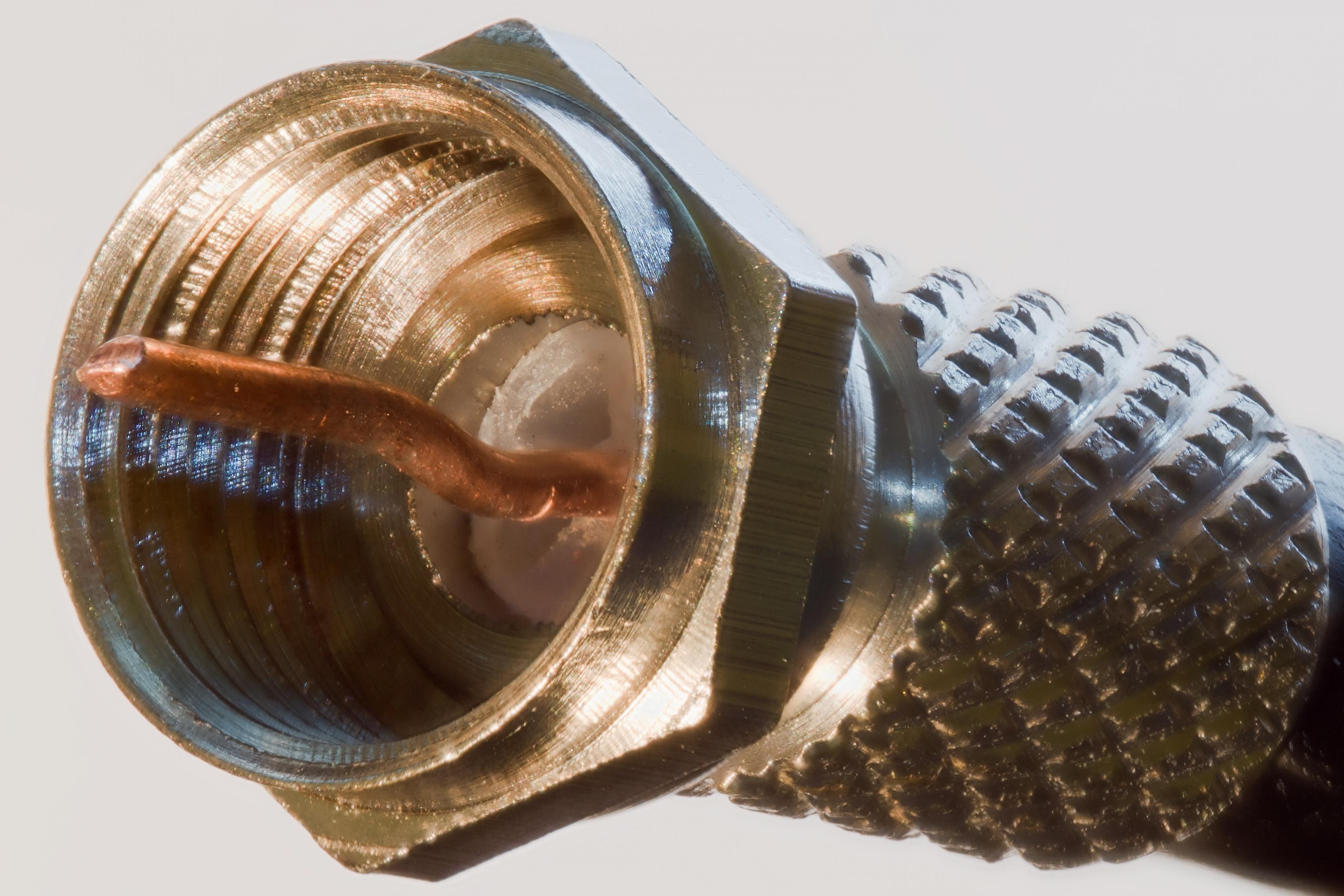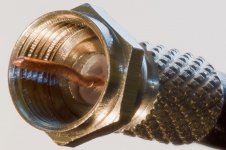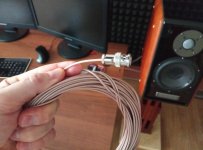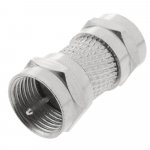SMA and SMB are very nice small signal connectors if that's what you want to use. One caution- some are a bit fragile and if used for an outside signal line, will snap off if you accidentally catch a cable on something.
I did wire a system with semi-rigid in my younger days as it was available. But you did need a very expensive kit to make a neat job of it.
These days, BNC or twinax would suffice for when feeling the need for something that had high performance connectors. Lemo, fischer and hypertac are also nice and overkill to the extreme.
These days, BNC or twinax would suffice for when feeling the need for something that had high performance connectors. Lemo, fischer and hypertac are also nice and overkill to the extreme.
I put Lemo, et al, in the same category as doing plumbing with Swagelok parts (back in parts of school when I had to both use and maintain semiconductor fab equipment), the stuff just feels oh-so nice. Just a joy to use.
If I found some surplus connectors of that ilk, I'm not above using them.
If I found some surplus connectors of that ilk, I'm not above using them.
Actually, that reminds me of a story I heard back when I was a stereo repair tech (I didn't see the aftermath, was just told by a shamefaced customer). He wanted quick disconnects for his stereo speakers so he didn't have to dig behind his receiver that was in a cabinet. So..... he used inline AC sockets from the receiver and AC plugs to the speakers. While his receiver was in for service, his wife while cleaning found one of the unattached plugs, and (you know the rest). He said it really woke her up and caused a brief ball of flame!
A colleague of mine had a similar experience when he was a young boy. Decades ago there used to be a radio distribution network in the Netherlands with loudspeaker plugs that were a bit too similar to mains plugs...
DPH -
My feelings exactly. Vacuum is like plumbing, but with a couple of extra zeroes tacked on to the end of the price tag. I don't pay real money for the fancy RF connectors if I can help it. A look through the Pasternak RF connector catalog will make your hair stand up on end, then fall out...
My feelings exactly. Vacuum is like plumbing, but with a couple of extra zeroes tacked on to the end of the price tag. I don't pay real money for the fancy RF connectors if I can help it. A look through the Pasternak RF connector catalog will make your hair stand up on end, then fall out...
DPH -
My feelings exactly. Vacuum is vacuum is like plumbing, but with a couple of extra zeroes tacked on to the end of the price tag. I don't pay real money for the fancy RF connectors if I can help it. A look through the Pasternak RF connector catalog will make your hair stand up on end, then fall out...
My feelings exactly. Vacuum is vacuum is like plumbing, but with a couple of extra zeroes tacked on to the end of the price tag. I don't pay real money for the fancy RF connectors if I can help it. A look through the Pasternak RF connector catalog will make your hair stand up on end, then fall out...
So..... he used inline AC sockets from the receiver and AC plugs to the speakers. While his receiver was in for service, his wife while cleaning found one of the unattached plugs, and (you know the rest).
Awesome! My dad learned the hard way that mains cords with male plugs on both ends is a really bad idea. 220 VAC. Somewhat damp basement cement floor. Barefoot. Yeah... 🙂
Now regarding SMAs the only disadvantage I see is that they tend to work loose if you wiggle the cables too much.
Where I used to work, we used SMA connectors everywhere, including on the DC power supply. I don't know how many intermittent phase noise issues I've traced down to a loose SMA cable. Many... Now some of that was probably that the connectors on the cables had worn out or hadn't been torqued properly when the test started. Still...
So if you do use SMA connectors, get an SMA torque wrench. Now, the SMB connectors I do like.
Tom
Connector for audio signal between PCBs.
What connector would you use to connect an audio signal to multiple PCBs? I'm also thinking about SMA or SMB, or BMC, but I'm not professionally sure of that.
Sorry i'm so new at diyaudio.It must be funny question but i never saw SMA on any amplifier board.Nobody use it.Whereas i think it is useful for signal input.Thank you.
What connector would you use to connect an audio signal to multiple PCBs? I'm also thinking about SMA or SMB, or BMC, but I'm not professionally sure of that.
What is the F type? I don't know exactly what you mean. I've seen more species, but it looks like an antenna connector to a TV.
What do you mean "awful enough"?
What do you mean "awful enough"?
Well, if the F-connector is good enough for transferring DC for antenna power and frequencies up to 10GHz it sure suffices for a lowly audio signal.
Of course the thick cable needed is most unpractical for DIY audio work but the connectors actually work very well. I installed thousands of them in satellite-/TV-installations.
Same goes for SMA and the like (up to 40GHz).
Totally over the top for most audio stuff.
If you also want to transfer eventual oscillations from your preamp to your power amp, you can look into offerings from Samtec, Harwin and the likes.
They offer PCB connectors with any configuration incl. unshielded and coaxials.
Why not just use shielded microphone cable with proper 3.5mm plugs and sockets?
I use these with shielded cables:
2.54mm leiste - Google Search
Pretty cheap to and easy to unplug, connect to your DMM, oscilloscope...
These also make nice testpoint if needed.
Of course the thick cable needed is most unpractical for DIY audio work but the connectors actually work very well. I installed thousands of them in satellite-/TV-installations.
Same goes for SMA and the like (up to 40GHz).
Totally over the top for most audio stuff.
If you also want to transfer eventual oscillations from your preamp to your power amp, you can look into offerings from Samtec, Harwin and the likes.
They offer PCB connectors with any configuration incl. unshielded and coaxials.
Why not just use shielded microphone cable with proper 3.5mm plugs and sockets?
I use these with shielded cables:
2.54mm leiste - Google Search
Pretty cheap to and easy to unplug, connect to your DMM, oscilloscope...
These also make nice testpoint if needed.
Well, if the F-connector is good enough for transferring DC for antenna power and frequencies up to 10GHz it sure suffices for a lowly audio signal.
Of course the thick cable needed is most unpractical for DIY audio work but the connectors actually work very well. I installed thousands of them in satellite-/TV-installations.
Same goes for SMA and the like (up to 40GHz).
Totally over the top for most audio stuff.
If you also want to transfer eventual oscillations from your preamp to your power amp, you can look into offerings from Samtec, Harwin and the likes.
They offer PCB connectors with any configuration incl. unshielded and coaxials.
Why not just use shielded microphone cable with proper 3.5mm plugs and sockets?
I use these with shielded cables:
2.54mm leiste - Google Search
Pretty cheap to and easy to unplug, connect to your DMM, oscilloscope...
These also make nice testpoint if needed.
Dear joensd,
It's clear to me that it will be satisfactory for audio. I understand the issues of RF and NF. I don't care about that.
It bothers me that it's an impractical connector and I've never seen it used for audio. I build a high-end amplifier from components used by satellites, for example. That's why I'm thinking about BNC. But I'm looking for a real connector that scientific institutions, for example, use when working with audio signals inside their systems. I made one sample. Look at the photo.
Attachments
Twinax
I use BNC twinax for diy. The small ones. Works great for Cable up to 6mm. They look like audio jewelry.
I did wire a system with semi-rigid in my younger days as it was available. But you did need a very expensive kit to make a neat job of it.
These days, BNC or twinax would suffice for when feeling the need for something that had high performance connectors. Lemo, fischer and hypertac are also nice and overkill to the extreme.
I use BNC twinax for diy. The small ones. Works great for Cable up to 6mm. They look like audio jewelry.
Of course the thick cable needed is most unpractical for DIY audio work
There is a thinner thread version that will work well with many large rubber audio cables, It will not hold with those cheap ones. I used them in satellite installations where You had to pass two coax cables trough a 16mm standard conduit.
perfectly fine for audio. especially good for very high performance gear that you want to do low noise and distortion characterisation on and want the measurements to be somewhat repeatable. maybe not for use on the final build necessarily, unless it is actual audio test gear you are building, but for building prototypes, semi-rigid SMA or SMB test points, with matching cables for your test gear, is actually what the likes of TI use on their eval boards.
Junk.

That is not a representative photo of the connector, even if it's from Wikipedia! I hate these connectors too but to show that picture is lying with the truth, the F connector got a pin connector and is not just the bare core wire sticking out.
Attachments
The "standard" F-connector is screwed/turned onto a coaxial-cable (twist-on-plug type) and yes, the bare conductor is "peeking" out; WIkipedia is absolutely correct.
There are lots of adapters/loads/DC-blocks etc. with solid pins though.
Your picture doesn´t show a F-connector but an adapter of some sort (coupling nut on both ends)
There are lots of adapters/loads/DC-blocks etc. with solid pins though.
Your picture doesn´t show a F-connector but an adapter of some sort (coupling nut on both ends)
Last edited:
Doesnt answer the SMA question but as an alternative to RCA I now use REAN mini-xlr's on all my builds. It means a non standard wiring when using 3 pin xlr's with 2 wire cable but I like the consistent snap in reliable connection. Ive made xlr to rca adaptors when I have to connect to "normal" equipment
- Home
- Amplifiers
- Chip Amps
- Why we can't use SMA connector for audio


